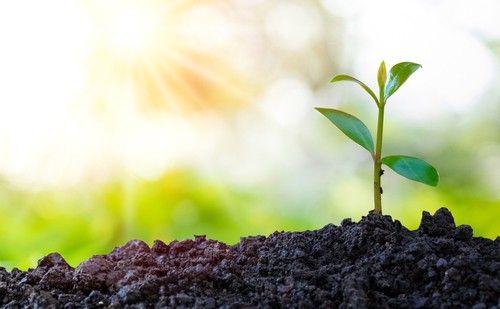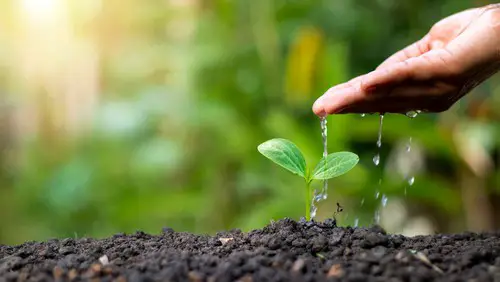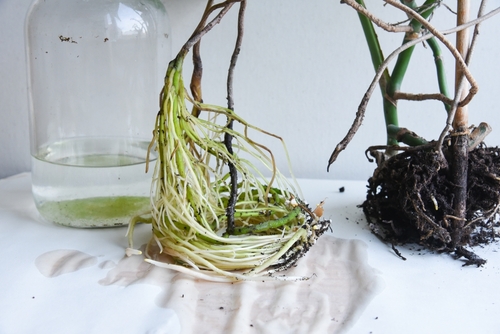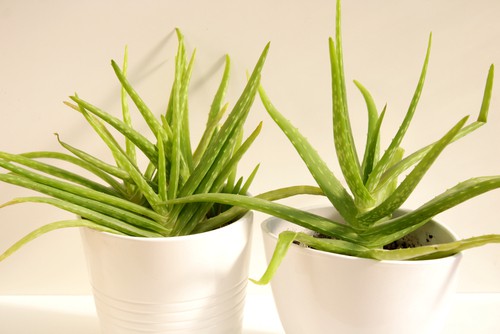Aloe vera is a popular succulent plant that is easy to care for and has a range of uses, from medicinal to cosmetic. However, one common problem that plant owners face is aloe vera turning yellow.
Yellow leaves can be a sign of several issues, including overwatering, underwatering, or disease. Understanding the causes of yellowing can help you take the necessary steps to revive your aloe vera plant.
Overwatering is one of the most common causes of yellowing aloe vera leaves. When the roots of the plant are waterlogged, they cannot absorb nutrients and oxygen properly, leading to yellowing and softening of the leaves.
Underwatering can also cause yellowing, as the plant becomes dehydrated and the leaves dry out. Other factors, such as improper soil, light, and temperature conditions, can also contribute to yellowing. By identifying the cause of the problem, you can take steps to restore your aloe vera plant to health.
Key Takeaways
- Yellowing aloe vera leaves can be caused by overwatering, underwatering, or other factors such as improper soil, light, and temperature conditions.
- Understanding the cause of yellowing is essential for taking the necessary steps to revive your aloe vera plant.
- Proper watering, soil, light, and temperature conditions, as well as identifying and treating diseases, can help maintain a healthy aloe vera plant.
Learn more about plant care from these other posts:
- Why Is My Aloe Plant Growing Sideways?
- Why Is My Alocasia Polly Turning Yellow?
- Why Is It Called a Janet Craig Plant?
Understanding Aloe Vera

Aloe vera is a succulent plant that belongs to the family Asphodelaceae and is native to the Arabian Peninsula. It is a popular houseplant due to its low maintenance, attractive appearance, and numerous health benefits. Aloe vera is known for its gel-like sap that is used in various medicinal and cosmetic products.
Aloe vera is a hardy plant that can survive in a wide range of conditions. It prefers bright, indirect sunlight and well-draining soil. Overwatering is one of the most common reasons for aloe vera turning yellow.
The plant should be watered only when the soil is dry to the touch. Inadequate sunlight and extreme temperatures can also cause the leaves to turn yellow.
Aloe vera is an excellent air purifier and can remove harmful toxins from the air. It is also known for its healing properties and can be used to treat various skin conditions such as burns, cuts, and insect bites. Aloe vera gel is rich in antioxidants, vitamins, and minerals that can nourish and moisturize the skin.
Why Is My Aloe Vera Turning Yellow – 5 Common Problems
Aloe vera plants are known for their hardiness, but they can still suffer from yellowing leaves. This can be caused by a number of factors, including overwatering, underwatering, poor soil quality, too much sun exposure, sudden temperature changes, and pests and diseases.
By identifying the cause of the yellowing, you can take steps to remedy the situation and help your aloe vera plant thrive.
1. Overwatering and Underwatering
One of the most common causes of yellowing aloe leaves is overwatering or underwatering. Aloe vera plants are succulents, which means they store water in their leaves and stems. If the soil is consistently too wet or too dry, the plant can become stressed and the leaves may turn yellow.
To prevent overwatering, make sure the soil is well-draining and allow the top inch of soil to dry out before watering again. If the plant is in a container, make sure there are drainage holes in the bottom. If the plant is in the ground, avoid planting it in an area with poor drainage.
2. Soil Quality
Another factor that can contribute to yellowing aloe leaves is poor soil quality. Aloe vera plants prefer a slightly acidic soil with a pH between 6.0 and 7.0. If the soil is too alkaline or too acidic, the plant may become stressed and the leaves may turn yellow.
To improve soil quality, add organic matter such as compost or peat moss to the soil. This will help improve drainage and provide nutrients for the plant.
3. Sun Exposure

Aloe vera plants need plenty of sunlight to thrive, but too much sun exposure can cause the leaves to turn yellow. If the plant is receiving too much direct sunlight, the leaves may become scorched and turn yellow or brown.
To prevent sunburn, move the plant to a location with partial shade or provide some shade with a sheer curtain or shade cloth.
4. Temperature Changes
Sudden temperature changes can also cause yellowing of aloe leaves. Aloe vera plants prefer temperatures between 60°F and 85°F. If the temperature drops below 50°F or rises above 90°F, the plant may become stressed and the leaves may turn yellow.
To prevent temperature stress, keep the plant in a location with consistent temperatures and avoid placing it near drafts or heating vents.
5. Pests and Diseases
Yellowing aloe leaves can also be a sign of pests or diseases. Common pests that can affect aloe vera plants include mealybugs, spider mites, and scale insects. Diseases that can cause yellowing of leaves include root rot and leaf spot.
To prevent pests and diseases, inspect the plant regularly and treat any problems as soon as they are detected. Use a natural insecticide or fungicide if necessary, and make sure the plant is not being overwatered or placed in a location with too much sun exposure.
By understanding the common causes of yellowing aloe leaves, you can take steps to keep your plant healthy and thriving. With proper care and attention, your aloe vera plant can continue to provide many benefits for years to come.
Watering Aloe Vera
Aloe vera is a succulent plant that can store water in its leaves. However, overwatering or underwatering can cause the leaves to turn yellow. It is important to water the plant correctly to keep it healthy.
1. Watering Frequency
Aloe vera does not require frequent watering. In fact, overwatering can be harmful to the plant. It is recommended to water the plant once every two to three weeks. However, the watering frequency may vary depending on the environmental conditions, such as temperature and humidity.
2. Watering Schedule
It is important to establish a watering schedule for aloe vera. The plant should be watered only when the soil is dry. A moisture meter can be used to determine the soil moisture level. The soil should be moist but not waterlogged.
3. Soil Moisture

The soil moisture level is an important factor in watering aloe vera. The soil should be well-draining to prevent water from accumulating in the pot. Aloe vera prefers a sandy or gritty soil mix that allows excess water to drain away from the roots.
4. Overwatering
Overwatering can cause the roots of the plant to rot and the leaves to turn yellow. Signs of overwatering include soft and mushy leaves, a foul smell from the soil, and the presence of fungus gnats. If the plant is overwatered, it should be allowed to dry out before watering again.
5. Underwatering
Underwatering can also cause the leaves of aloe vera to turn yellow. The plant may appear wilted and the leaves may become dry and crispy. If the plant is underwatered, it should be watered thoroughly until the soil is moist.
The Right Soil for Aloe Vera
The right soil is crucial for the health of an aloe vera plant. Aloe vera prefers well-drained soil that is not too rich in nutrients. The soil should be porous and allow water to drain quickly. If the soil is too dense or heavy, it can lead to poor drainage, which can cause the roots to rot and the leaves to turn yellow.
When choosing soil for aloe vera, it is important to consider the type of potting mix. A good potting mix for aloe vera should contain a mixture of sand, perlite, and peat moss. This type of soil mixture provides the right balance of nutrients and drainage that aloe vera needs to thrive.
It is also important to ensure that the soil is moist but not too wet. Aloe vera plants do not like to sit in water, so it is important to use a well-draining pot with drainage holes in the bottom. This will allow excess water to drain out of the pot and prevent the soil from becoming waterlogged.
To determine if the soil is too wet or dry, use a soil moisture meter. This tool will help you determine the level of moisture in the soil and determine if it needs to be watered or not.
Light and Temperature Needs

Aloe vera plants thrive in bright, indirect sunlight. Direct sunlight can cause sunburn and yellowing of leaves. Therefore, it’s best to place the plant near a window that receives bright, indirect sunlight for most of the day. If the plant is placed in a location with harsh sunlight, it can cause yellowing of leaves and even damage the plant.
In terms of temperature, aloe vera plants prefer warm temperatures between 60-75°F (15-24°C). Sudden temperature changes can cause stress to the plant, resulting in yellowing of leaves. Therefore, it’s important to avoid placing the plant near a drafty window or air conditioning unit.
If the plant is kept in a location with insufficient light or low temperatures, it can cause the leaves to turn yellow. In such cases, it’s recommended to move the plant to a brighter location with warmer temperatures.
Transplanting and Repotting
Transplanting and repotting can help revive a yellowing aloe vera plant if done correctly. It is recommended to repot the aloe plant every two to three years or when it outgrows its current pot.
When repotting, choose a pot that is one size larger than the current pot and has drainage holes to allow excess water to escape. A shallow pot is preferred over a deep one as aloe vera plants have shallow roots.
Before transplanting, gently remove the aloe plant from its current pot and inspect its roots. If the roots are brown and mushy, it may be a sign of root rot, and the affected roots should be trimmed.
Once the roots are trimmed, allow them to dry for a day or two before planting them in the new pot. Use a well-draining soil mix, such as a cactus or succulent soil, to prevent the roots from sitting in water.
After transplanting, water the aloe vera plant sparingly to avoid repotting shock. It is recommended to wait a week or two before watering to allow the roots to settle into their new soil.
Transplanting and repotting can also encourage new growth in the aloe vera plant. However, it is essential not to repot too often or in too large of a pot, as it can lead to overwatering and root rot.
Nutrition and Fertilizer

Aloe vera plants require proper nutrition to thrive. Nutrient deficiencies can cause the leaves to turn yellow. Therefore, it is important to provide the plant with the right amount of nutrients.
Fertilizer is an effective way to provide the necessary nutrients to the plant. Aloe vera plants require fertilizers that are high in nitrogen, phosphorus, and potassium. Nitrogen is essential for leaf growth, while phosphorus is important for root development. Potassium helps the plant to absorb water and nutrients.
It is important to note that too much fertilizer can be harmful to the plant. Over-fertilization can cause nutrient burn, which can lead to yellowing of the leaves. Therefore, it is important to follow the instructions on the fertilizer package and apply it in moderation.
Organic materials, such as compost and manure, can also be used to provide the necessary nutrients to the plant. These materials release nutrients slowly, which can help prevent over-fertilization.
Inorganic materials, such as synthetic fertilizers, can also be used. However, it is important to choose a fertilizer that is specifically formulated for aloe vera plants. This will ensure that the plant receives the right balance of nutrients.
Iron deficiency is a common nutrient deficiency in aloe vera plants. Iron is essential for the production of chlorophyll, which gives the leaves their green color. A lack of iron can cause the leaves to turn yellow.
To prevent iron deficiency, it is important to provide the plant with an iron-rich fertilizer. Iron chelates can also be added to the soil to provide the plant with the necessary iron.
Identifying and Treating Diseases
Aloe vera plants are prone to a variety of diseases that can cause yellowing leaves, root rot, and other issues. Identifying the disease is crucial to treating it effectively. Here are some common aloe vera diseases and their treatments:
1. Soft Rot
Soft rot is a bacterial disease that causes the plant to wilt and the leaves to turn yellow and mushy. The plant will eventually collapse and die. The best way to prevent soft rot is to avoid overwatering and to ensure the soil is well-drained. If the plant is already infected, remove the affected leaves and apply a fungicide to the remaining plant.
2. Leaf Rot
Leaf rot is caused by a fungus and can cause the leaves to turn yellow and mushy. The affected leaves should be removed immediately, and the plant should be treated with a fungicide. To prevent leaf rot, avoid overwatering and ensure proper drainage.
3. Root Rot

Root rot is caused by overwatering and poor drainage. It can cause the leaves to turn yellow and the plant to wilt. To treat root rot, remove the plant from the soil and trim away any rotting roots. Repot the plant in fresh, well-draining soil and avoid overwatering.
4. Pests
Pests such as mealybugs and spider mites can cause yellowing leaves and other issues. To treat pest infestations, remove any affected leaves and apply an insecticide or use a natural pest control method such as neem oil.
5. Drought
Drought can also cause yellowing leaves in aloe vera plants. To treat drought stress, water the plant deeply and allow the soil to dry out between waterings.
Maintaining Healthy Aloe Vera
Aloe vera is a popular succulent that is easy to care for and has numerous health benefits. To keep your aloe vera plant healthy and prevent it from turning yellow, it is important to follow a few basic care guidelines.
Firstly, aloe vera plants thrive in bright, indirect light. Place your plant in a south-facing window or another location where it can receive plenty of natural light throughout the day. However, be careful not to expose your aloe vera plant to direct sunlight, as this can cause stress and damage to the leaves.
Secondly, it is important to water your aloe vera plant properly. Overwatering is a common cause of yellowing aloe leaves, as it can lead to root rot and other problems.
Allow the soil to dry out completely between watering, and then water the plant thoroughly until water drains out of the bottom of the pot. In general, aloe vera plants do not require frequent watering, and overwatering can be more harmful than underwatering.
Thirdly, it is important to fertilize your aloe vera plant sparingly. Commercial succulent fertilizers can be used once or twice a year to provide the plant with the necessary nutrients. However, over-fertilizing can cause the leaves to turn yellow and can harm the plant’s overall health.
Fourthly, aloe vera plants prefer a slightly acidic soil with good drainage. Use a well-draining potting mix that is specifically designed for succulents, or create your own mix by combining sand, perlite, and peat moss. Avoid using heavy soils that retain water, as these can lead to root rot and other issues.
Finally, it is important to take care of your aloe vera plant’s leaves. Remove any dead or damaged leaves as soon as possible, as these can attract pests and diseases. Aloe vera gel can be harvested from healthy leaves, but it is important to avoid damaging the plant in the process.
By following these basic care guidelines, you can maintain a healthy aloe vera plant with vibrant, blue-green or grey-green leaves. If your plant does start to turn yellow, refer to the other sections of this article to identify the cause and take appropriate action.
Frequently Asked Questions

How do you fix yellow aloe vera?
To fix yellow aloe vera, the first step is to identify the cause of the problem. Overwatering is one of the most common causes of yellowing aloe vera. Aloe vera is a desert plant and doesn’t need frequent watering.
Water the plant only when the soil is dry to the touch. Another cause of yellowing aloe vera is underwatering. In this case, the plant needs more water. Ensure that the plant is getting enough sunlight, but not direct sunlight. If the plant is getting too much direct sunlight, it can turn yellow.
Is it OK if aloe vera is yellow?
Yellow aloe vera is not necessarily a bad thing. Sometimes, it is a sign that the plant is getting too much or too little water, or too much sunlight.
However, if the yellowing is accompanied by mushy leaves or a soft stem, it could be a sign of root rot. In this case, it is important to take action to save the plant.
What does it mean when aloe is yellow?
Yellow aloe vera usually means that the plant is stressed. The stress could be due to several factors, including overwatering, underwatering, too much direct sunlight, or nutrient deficiencies. Identifying the cause of the stress is the first step in fixing the problem.
How do I get my aloe plant to turn green again?
To get your aloe plant to turn green again, you need to address the underlying cause of the yellowing. If the cause is overwatering, reduce the frequency of watering.
If the cause is underwatering, water the plant more frequently. Ensure that the plant is getting enough sunlight, but not direct sunlight. If the plant is getting too much direct sunlight, move it to a place with partial shade.
Why is my aloe plant turning brown at tips?
Brown tips on aloe vera leaves are usually a sign of underwatering. When the plant doesn’t get enough water, the tips of the leaves start to dry out and turn brown. To fix this problem, water the plant more frequently and ensure that the soil is moist.
Can I use yellow aloe vera?
Yellow aloe vera can still be used, but it may not be as effective as green aloe vera. The yellowing could be a sign that the plant is stressed and not producing as much of the beneficial compounds as it would if it were healthy.

Hey, I’m Lisa and I’ve been an avid gardener for over 30 years. I love writing, talking and living in the garden! Feel free to connect with me on my socials below


